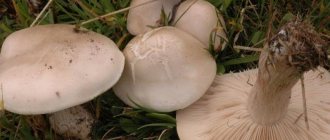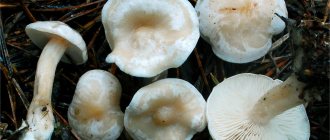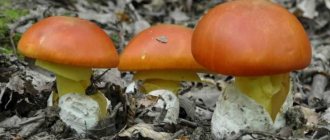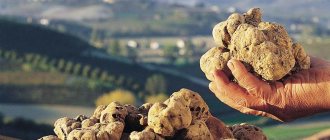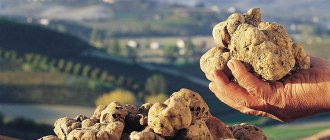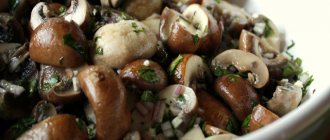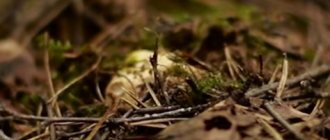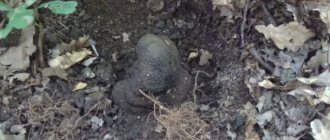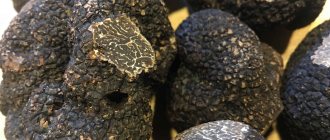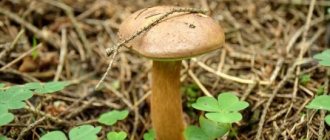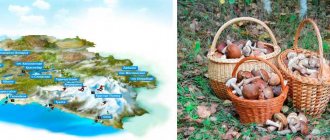Characteristics of the mushroom
Summer truffle (Tuber aestivum - Latin) is an edible mushroom belonging to the division of ascomycetes (marsupials), the truffle family, the genus of truffles. Other variety names:
- Black Russian;
- Burgundy;
- Summer black;
- Scorzone;
- Saint-Jean.
Summer truffle is rarely found in nature, therefore it is listed in the Red Book of Russia, as well as in the regional Red Books of the Voronezh region, Krasnodar Territory, the republics of Adygea and North Ossetia-Alania. G
The fish belongs to the category “Near Threatened” and requires control over the population and protection of habitats.
Delicacy truffles are considered the most expensive in the world. Prices start from 500–600 € per kilogram of artificially grown black truffles. The cost of specimens found in the wild is even higher. In Moscow restaurants they are served for $5 per 1 g of the delicacy.
Summer truffle, Russian black truffle
Category and status 3 “Rare” –3, RD. A species that lives in the nemoral and subtropical zones of the Palaearctic. In Russia, the summer truffle is recorded only in the North Caucasus. Red Book of the USSR - status 3, Red Book of the Russian Federation - status category 2.
Global Threat Category on the IUCN Red List
Not included in the IUCN Red List.
Category according to IUCN Red List criteria
Regional populations are classified as Near Threatened, NT; E. S. Popov.
Belonging to the objects of international agreements and conventions ratified by the Russian Federation
Brief morphological characteristics
The fruiting bodies are underground, tuberous, 3–10(20) cm in diameter. The outer surface is black or black-brown, covered with pyramidal hexagonal warts. The pulp has a strong aromatic odor, is initially whitish, and when ripe is yellow-brown, penetrated by white veins forming a marble pattern. Pouch-shaped bags, 60–90 ? 50–70 µm. Disputes 25–50 ? 17-40 microns, 1–6 per bag, ellipsoidal or almost spherical, light brown, with reticulate ornamentation.
Spreading
General range: Europe (Western, Central, Southern) [1]; Caucasus (Georgia, Armenia [2–6]; North Africa [1]; China [7]. Russia: North Caucasus (KK [2,3]; North Ossetia - Alania [4]).
Krasnodar region: Western Caucasus: Adagum-Pshishsky district (environment of Neberdzhaevsky reservoir); Northwestern Transcaucasia: Anapa-Gelendzhik district (village Abrau-Dyurso) [2].
Features of biology, ecology and phytocenology
A heterothallic species that requires the presence of genetically diverse individuals in the population for sexual reproduction. Symbiotroph, forms mycorrhiza with species of the genera Fagus, Quercus, Tilia, Corylus.
Found in deciduous forests in October. In other parts of its range it occurs in various broad-leaved forests with a sparse herbaceous layer.
Prefers carbonate soils of various mechanical compositions with a high pH value (7–8) and low nitrogen and phosphorus content. Mature fruiting bodies are found from May to February.
Spread by animals (rodents, deer, wild boars, insects) eating fruiting bodies.
Number and its trends
It is rare in CC.
Limiting factors
High demands on soil and climatic conditions, slow ripening of fruiting bodies, vulnerability of populations to the potential for commercial collection of fruiting bodies.
Security measures
It is necessary to monitor the state of the population, protect known and identify new locations, as well as regulate the collection of fruiting bodies.
Information sources. 1. Weden, 2004; 2. Personal communication, N. A. Don; 3. Chernovol, 2004; 4. Nikolaev, 1999; 5. Voronov, 1915; 6. Red Book... 1984; 7. Song et al., 2005. Compiled by E. S. Popov; ill. [6].
Description
The truffle does not have a clearly defined cap or stem. Its fruiting body is tuberous, 2.5–10 cm in diameter. The surface is uneven and covered with large pyramidal warts. Color ranges from blue-black to dark brown. The fruiting body of young specimens is located in the ground at a shallow depth, while of older specimens it may appear above the surface.
The fungal spores are stored in the hymenophore. This is the lower part of the cap that carries the hymenium, a thin layer of spores. The larger the surface of the fungus, the greater the number of spores it produces and spreads around. In truffle they are mesh, shaped like an oval or ellipse. Their size is 30X24 microns, and the spore powder is yellow-brown in color.
The pulp when cut has a strong aromatic odor, at first whitish-gray, when ripe it is yellow-brown, almost brown with white veins resembling a marble pattern. Young mushrooms have dense flesh, while ripe ones have loose flesh.
Recipes
If you are lucky enough to find a black truffle, then congratulations. Surely a very tasty dinner awaits you.
- So, first you need to rinse the truffle well.
- Then, soak it in water for several hours.
- Dry the truffles and carefully cut them into cubes.
- Then, put it in a blender container.
- Add a couple of tablespoons of sour cream, parsley, dill and basil there.
- Beat everything at high speed with a blender.
- Then refrigerate for a couple of hours to allow the mixture to thicken.
Congratulations, you have made a very tasty sauce.
Another recipe involves baking in the oven.
- You need to cut your favorite vegetables.
- Then, cut the pork meat.
- Place in a baking bag and place in the oven for half an hour at 200 degrees.
- Then, unfasten the baking bag and add the truffle cut into slices.
- Also, add chopped tomatoes for juiciness.
- Place in the oven for a couple of hours.
Ice cream with truffle
- Cut the truffle into small pieces.
- Place in blender.
- Also, put yogurt and some milk there.
- If desired, add pieces of your favorite fruit.
- Beat everything thoroughly with a blender.
- Then, fill the ice cream molds with the resulting mixture, and then put it in the refrigerator.
A little history
150 years ago, the summer truffle was much more common. Peasants of the Podolsk, Moscow, Pskov, Tula, Oryol, and Belgorod regions were engaged in collecting and selling it. This is described in an article in the magazine “New Time” dated 1902.
In Crimea, the first reliable mention of this mushroom is in the note of N.K. Sretinsky “Materials for the flora of the Novorossiysk region and Bessarabia” dated 1874.
The most serious known source is the monograph of the Russian mycologist F.V. Buchholz “Materials on the morphology and semantics of underground fungi” (1902).
Do truffles grow in the Kaliningrad region? Even truffles can be found in Kaliningrad forests
This autumn pleases us with an unprecedented number of mushrooms. Most city dwellers prefer to bring the well-known boletus, honey mushroom and boletus from a “quiet hunt”, although more than 300 species of mushrooms are found in our region, more than half of them are edible. This even includes fly agaric! You won’t get poisoned by it if you prepare it correctly, but it’s still not worth the risk.
“People are afraid to take unfamiliar mushrooms, and rightly so,” says Maria Popova, head of the nature department of the regional history and art museum. – Many popular mushrooms have deadly “doubles”. If you have any doubts or have found a fungus that looks amazing, contact the museum. They will not only tell you the name of the find, but will most likely show you a model of the “stranger.”
There are "red books"
Two years ago, a Kaliningrad resident approached Maria Popova. He brought a mushroom that looked like a potato. It turned out to be a black truffle! It turns out that if you are willing and attentive, you can find an expensive delicacy of French cuisine in the top layer of the earth. In addition to this “red book”, in our forests you can find unique mutinus canis, ramaria, hare’s ear and coral hedgehog. Their dummies (by the way, most closely resembling natural ones) are in the museum. Replicas of mushrooms for the Kaliningrad exposition in the 80s were made by a craftsman from the Moscow region, Anatoly Manaev. Since then, a mushroom exhibition has been held in our city every autumn, but museum workers bring something new to it every time.
So, this time visitors will be able to learn the secrets of fungotherapy - mushroom treatment. For example, tasty chanterelles contain a unique substance - quinnomanosis, this is the poison of various helminths. It’s not for nothing that worms don’t live in chanterelles. Many animals know this. Foxes, raccoons and bears eat these miracle mushrooms to get rid of parasites. A young raincoat is also good in terms of useful properties. It can be eaten raw, adding egg and mayonnaise for taste. This salad removes toxins from the body.
Let's go for the saffron milk caps
“I’m a passionate mushroom picker, but at the exhibition I learned a lot of new things about Kaliningrad mushrooms,” exhibition visitor Anna Sharova told SK.
In the past, a factory artist, and now a pensioner, says that this year there is an unprecedented harvest of honey mushrooms in the forests. Now you can also collect saffron milk caps; they are suitable for pickling.
The mushroom exhibition will run at the Historical and Art Museum (Klinicheskaya St., 21) for two months. Ticket prices range from 20 (schoolchildren) to 50 rubles.
Unprecedented harvest of honey mushrooms
Resident of the village Zheleznodorozhny Pravdinsky district Valentina Belyavskaya says that there are a lot of honey mushrooms in the forest.
“We’ve already gained the same amount as in two seasons,” assures Valentina Petrovna.
She and her husband collect mushrooms in the late afternoon, and at 5 am they go to Kaliningrad to the market. Not everyone sells the collected gifts of nature. He cooks wonderful soups from fresh mushrooms in meat broth and packs up to 100 cans of various canned goods.
Recipe for pickled honey mushrooms from Valentina Belyavskaya
What you need (for 1 kg of mushrooms):
1 liter of marinade: 1 liter of water, 1 tbsp salt, 1 tbsp. l sugar, 2-3 cloves, 1 bay leaf, several peas of allspice and black pepper, 1.5 tbsp vinegar essence.
Rinse honey mushrooms thoroughly and cook for 15-20 minutes. The mushrooms are ready when they settle to the bottom of the pan. Rinse them with running water. Pour the marinade over the mushrooms and cook for 15 minutes. Place in hot sterilized jars and close with lids. Store canned goods in the refrigerator. Before eating, you can add sunflower oil and onions to the mushrooms. Consolidation!
Unprecedented harvest of honey mushrooms
Resident of the village Zheleznodorozhny Pravdinsky district Valentina Belyavskaya says that there are a lot of honey mushrooms in the forest.
“We’ve already gained the same amount as in two seasons,” assures Valentina Petrovna.
She and her husband collect mushrooms in the late afternoon, and at 5 am they go to Kaliningrad to the market. Not everyone sells the collected gifts of nature. He cooks wonderful soups from fresh mushrooms in meat broth and packs up to 100 cans of various canned goods.
How to find a mushroom? Time and place of fruiting
The delicacy is found throughout the Crimea, on the Black Sea coast in the Krasnodar Territory, and in the Caucasus. Fruiting usually occurs throughout the summer. But in some areas it may last until late autumn.
Harvesting summer truffles is a complex process. The favorite places of this species are deciduous and mixed forests. Mushrooms can be looked for near oak, hornbeam, and birch, with which it forms mycorrhiza. They often grow in small groups.
When searching, you need to pay attention to the favorite places where truffles grow: stunted areas, a grayish tint to the soil surface, a cluster of midges above the ground. The tuber is located at a depth of 4–30 cm, but sometimes you can see tubercles protruding above the surface.
Truffle has a strong aroma. Under a layer of foliage and earth, a person cannot catch the smell, but animals can smell it from a distance.
To search for these mushrooms, dogs (dachshunds, Yorkshire terriers) and pigs were previously specially trained. They found a place where the delicacy grew and began to dig it up. The mushroom picker’s task is to distract the animal in time so that the quality of the delicacy does not suffer.
Where to buy truffle mycelium? Infection of the tree root system
It is necessary to purchase mycelium only in specialized stores and from trusted sellers. In order to infect one seedling with mycelium, you will need approximately 150 grams of fresh or 100 grams of dry mycelium. Its cost will be in the range of 500-1500 rubles - it all depends on the supplier and quality.
It will be easier to infect the root system of an adult tree with fungal spores, but in this case the likelihood that the mycelium will take root well is small, so the root system of the seedlings is usually treated with a substrate containing mycelium. Oak and walnut are best suited for this. When using the latter, you can get double benefits. Seedlings are taken 30-50 cm high and inoculated with spores of French black, summer or Chinese truffle.
To infect the roots of the trees, they are treated with a mixture of peat and liquid mycelium substrate - this is done in a container, after which the trees are quarantined for 2 weeks.
It is imperative to use personal hygiene products, and the room must be sterile. After this, the seedlings are placed in the ground, the final overgrowing of the roots with mycelium occurs after 11-12 months.
Growing at home and in the country
Many people are interested in the question: is it possible to grow summer truffles in the country? In China and Europe, specialists have long developed the technology for its artificial cultivation.
To do this, you need to create special conditions: suitable soil, climate, presence of trees. Another option is to infect the roots of the seedling with fungal mycelium. Such specimens have a less intense taste and smell, but the price is similar to those grown in the wild.
Important! Growing summer truffles at home takes a lot of time and money, so this activity attracts mainly professionals.
Soil requirements
The culture prefers light soil, in particular sandy loam. If the site is mostly loam or alumina, before planting the soil is enriched with sand or expanded clay. The latter will become drainage, which will help the water to quickly absorb and go into the deeper layers. In addition, peat and humus are also added.
Garlic loves fertile neutral soil, into which manure was added 2-3 years ago. The culture does not recognize fresh organic matter, and therefore it should not be introduced.
The appropriate soil acidity level for garlic is 6.5.
The soil is prepared in advance: for winter garlic - at the end of summer (about a month before the intended planting), for spring garlic - in the fall. For example, loams are supplied with organic matter, Superphosphate and potassium salt. Then they add lime and dig it up. In addition to what has been done, the beds are spilled with copper sulfate (one large spoon per bucket of water).
How to identify false duplicates?
Mushroom lovers should remember that the black summer truffle has inedible counterparts. They are very dangerous to human health. These mushrooms include:
- Reindeer truffle;
- False truffle;
- some types of Steppe truffle.
These mushrooms belong to completely different families, and, despite the external similarity, you can see their differences (see photo). Most often, false truffles end up in the basket of inexperienced mushroom pickers.
| Reindeer truffle | Grows in the forests of Europe and North America. Causes abdominal pain and indigestion. |
| False truffle | Dangerous to human life. Belongs to the family of basidiomycetes. It is dark red or beige in color and has an oblong shape. |
| Some types of Steppe truffle | Grows in Turkmenistan, Azerbaijan, North Africa, Southern Europe. Its fruiting body is located on the surface, forming a mushroom in the form of a tuber. |
Important! At the first signs of poisoning, you should immediately seek medical help.
Taste, medicinal properties, benefits and possible harm
The smell of truffle delicacy is similar to the aroma of seaweed or fallen leaves. Its nutty, sweetish taste is valued by gourmets somewhat less than other types of truffles.
In cooking, these mushrooms are used to prepare sauces, pates, pie fillings, and as a seasoning for seafood and poultry dishes.
Occasionally they are served as an independent dish, and can also be preserved in cognac or frozen.
Eating truffles is very beneficial:
- It contains carbohydrates, vegetable proteins, fiber, vitamins C, PP, B, antioxidants, various minerals, pheromones that improve mood.
- Its juice helps with eye diseases.
- The pulp of the mushroom relieves gout pain.
Anyone who is not allergic to penicillin can eat truffles.
Important! The main thing is that the mushroom must be fresh.
Advantages and disadvantages, features, differences from other varieties
The Truffle tomato is not the only “colorful” series of varieties. Among the relatively old ones is the well-known De Barao, among the new ones there is a series of 14 varieties of Nepas tomatoes. True, Nepas differs not only in color, but also in the shape of the fruit. The peculiarity of the Truffle tomato is the interesting shape of the fruit and its wonderful taste. It is the combination of these parameters that distinguishes the Truffle tomato from most other varieties, and yet their number is already measured in many hundreds.
The most important advantages of the variety are:
- excellent fruit taste, slightly different for different varieties;
- good transportability and long-term preservation of the crop;
- high disease resistance;
- versatility of use, including for table decoration.
It is difficult to name the disadvantages of the variety: there are no huge ones, but among the minor ones they name both the need for systematic pinching and the high demands of the variety on the nutritional value of the soil. In addition, in the middle zone, and even more so to the north, planting a Truffle tomato in open ground is very risky, and growing it in a greenhouse is only available to those gardeners who have the opportunity to visit the site every day. The variety's yield is not very high, especially in the case of unskilled care.
Tuber Aestivum Extract in cosmetics
Due to the presence of minerals and amino acids, Tuber Aestivum Extract is highly valued in cosmetology and is one of the most effective and expensive ingredients. Its active ingredients help:
- in the fight against wrinkles;
- improve complexion;
- remove swelling and redness;
- restore skin after peeling and plastic surgery;
- stimulate the production of elastin and collagen;
- heal the hair structure and activate its growth.
The extract is used to produce skin care products for the face, hands, body (creams, serums, foundation, oil ampoules, moisturizers) and hair (shampoos, balms, masks).
The main advantage of such cosmetics is safety and naturalness.
